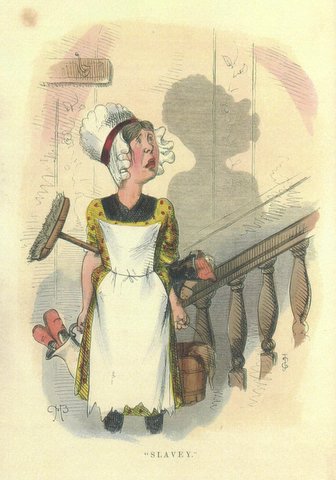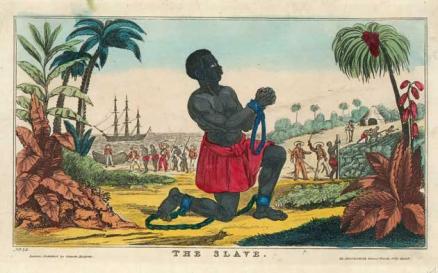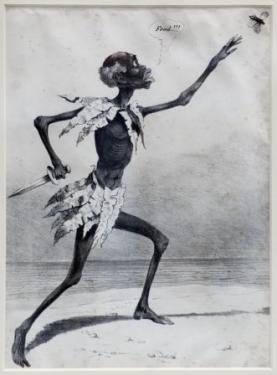”President Obama’s speech didn’t do much for Muslim women. He defended their rights in Western countries to wear the hijab. He didn’t touch on Muslim women being confined, being forced into marriages or being victims of honor killings: These traditions and principles in the Koran and in Islam are being practiced in the West. He didn’t address that.” ( Ayaan Hirsi Ali )
“Slavery exists in the homes of the Arabs and Tuaregs, even here in Niamey, where you can find young black people preparing tea, doing the housework or keeping shop for their masters without pay,” he said. Jackou, the son of a Tuareg chief and a Hausa woman, is the founder of the opposition Niger Party for Self-Management. “Last month in parliament, not one of the MPs took the floor for the debate on slavery. Yet there are nine white Arab slave-masters and a dozen white Tuareg slave-masters in the chamber,” he said. “Everyone knows they own slaves but no-one wants to talk about it.”“They say that if we discuss this, it will smear the government,” he added. “People are afraid of the Tuaregs because they have arms and staged a rebellion, so everyone wants to keep them happy,” he said.
”European slave buyers made the greater profit from the despicable trade, but their African partners also prospered. Many grew strong and fat on profits made from selling their brethren.” Africa’s rulers, traders and military aristocracy protected their interest in the slave trade. They discouraged Europeans from leaving the coastal areas to venture into the interior of the continent. European trading companies realised the benefit of dealing with African suppliers and not unnecessarily antagonising them. The companies could not have mustered the resources it would have taken to directly capture the tens of millions of people shipped out of Africa. It was far more sensible and safer to give Africans guns to fight the many wars that yielded captives for the trade. The slave trading network stretched deep into the Africa’s interior. Slave trading firms were aware of their dependency on African suppliers.

- ”The majority of people who were slaves in Africa did not have to live a lifetime of servitude, they would be slaves for only a few years out of their lifetime and then be free again. Unlike slavery here in the United States slaves in Africa had rights and were treated more like people. Slaves were allowed to marry, some were paid and even own land.”
Its all a bit archaic. Their economic life was based on slave trading; the handling of human cargo across the Sahara between Africa and Tripoli by camel caravan. The regime of the Tuareg was over by the 1960′s.The abolition of slavery eventually destroyed the basis of their society. Yet, for years, they would sit in tents doing nothing, hour after hour, concentrating with all their being on maintaining the tradition and ceremony of a vanished way of life. His was a cameline economy; and caravaners have been made obsolete by the modern world meaning nobody needs to depend on the Tuareg for transport or protection, which were the only function he knew.
Without slavery, they had nothing to do, perhaps tend a few goats and find some scraps in the desert to light the domestic fire. Until the 1960′s, survivors of their great days of their desert dominion could still be found in the remote corners of the Air; no more strange in appearance, accoutrements, and weapons to a Roman observer from antiquity than to modern man. The same camel, riding saddle, and method of guiding his mount with his bare feet; his weapons a sword, a spear, a dagger, and a large shieldmade of sun dried hide, all arms which would make him a fair match for a Roman soldier.
But this type of fiercely independent, proud, and primitively armed fighting man disappeared, along with his basic culture and even his language. Language, being the index of the rise and fall of an ethnic group; their written alphabet is all but forgotten. it was one of the most ancient of North African alphabets, going back at least to Carthaginian times and probably, like all other Western alphabets, derived from the Phoenician. But since in the old monuments it is written from left to right, right to left, up to down, down to up, and in the spiral manner, it is not, unnaturally, difficult to read. In fact, no one can write it all now, and it hs taken its place, like old Cornish, as an utterly ”dead” language. But the old ancestral roots die hard, and for some, the slave ritual continues to exist as a manifestation of their culture, particularly in the Niger:
”Slavery is a status ascribed at birth in the countries where it occurs. In Niger for example the Tuareg follow a complicated caste system which incorporates slaves at the bottom. Tuareg culture does not allow people to marry outside of their caste. It is significant that in Niger slaves identify themselves as Tuareg even if their ancestry technically belongs to African people enslaved by Tuareg raiders. At the top of Tuareg culture are nobles and warriors; next come Islamic clerics or marabouts, below them are free men, followed by casted groups such as blacksmiths and other occupational castes. Below all of these are freed-slaves and the bottom rung
is reserved for slaves. All these free and casted groups can have slaves, even slaves themselves if they have the financial means.

- ” Officially, the Jewish leadership in the US, namely Rabbi Wise, and halukkah organizers Rabbis Leeser and Morris Raphall, were either shamefully quiet about the subject, or, as in the case of Rabbi Raphall, sympathetic to slavery. In Philadelphia, Jews were among the most active abolitionists. However, Philadelphia-born Mordechai Manuel Noah was slavery’s most vocal advocate. On the opposite side, Judah Touro was one of its most outspoken opponents as was Rabbi Felsenthal. Rabbi Einhorn, the “practical colonization” advocate, was almost lynched by a mob due to his outspoken anti-slavery stand.”
You can be freed in Tuareg culture by your master if they wish to appease Allah to make amends for an indiscretion or even out of the goodness of the their heart. Historically, slaves could be freed if they acted with distinction and valour in battle. Despite this, freed slaves remain near the bottom of the Tuareg caste system, only above slaves.”
With the official abolition of the slave trade, the Tuaregs, who had been the only link for two and a half thousand years between Central Africa and the Mediterranean, in other words, between the African and white world, have nonetheless seen the sun set on their glory days. More or less unemployed and purposeless, and given to inter-tribal rivalry to pass the time; certainly not enough trade and commerce to justify the size and population of their centres and the engagement in terrorism to manifest some spectre of nationhood.

''Here is the transformation image I mentioned earlier -- late in the 19th century, the now ludicrous case was made by some that economic choices, the market, might cause a person to become less, to devolve. This Charles Bennett image has a woman who leaves her household to work (as a maid). As a result, her "race" is transformerd. It's from Shadow and Substance (my edition is -- Shadow and Substance by Charles H. Bennett and Robert B. Brough; London: W. Kent & Co. 1860).''
Even after the slave trade had been suppressed, the old life of the desert survived for a while for one simple reason if no other; the absence of salt in the Sudan. Nearly all the salt in Central Africa had always come from the north across the Sahara on the backs of camels, donkeys, horses and oxen. The salt mines were in the middle of the most terrible wastelands of the desert, and had been worked year round by African slaves, who died within a few year
their arrival at the mines and were immediately replaced by new workers. The salt they mined was worth its weight in gold in Timbuktu, and its transport across the desert was a commercial enterprise of unbelievable size, involving the assembly of as many as 40,000 camels to make the quick dash from Bilma to Kano; returning home with corn and cloth.
According to the Travel Channel show Bob Geldof in Africa, the descendants of those slaves (known as the Bella) are still slaves in all but name. In Niger, where the practice of slavery was outlawed in 2003, a study found that almost 8% of the population are still slaves. Anti-slavery activists allege that anywhere between 43,000 to 800,000 people live in bondage in Niger, mostly among the Tuareg and Arab communities who live on the southern fringes of the Sahara desert.
”In the hamlet of Kawassa, a cluster of straw huts in southwestern Niger, Tafoussoussat Machar gazed at the nearby sand dunes and recalled the first 30 years of her life that she spent as a slave. “In the morning I’d pound the millet, go to the well, fetch the wood, cook the meal, return to the well, and in the evening I’d pound the millet again, and I was never paid,” she said. “If I didn’t obey I was beaten,” Machar added, speaking in Tamasheq. “I never thought I’d be free one day.” Born into bondage, like her parents, to a Tuareg family in the Tahoua region of southwest Niger, she was sold at the age of 20 to a second master for the price of 100,000 CFA francs (US $200). Machar said this man, who already had four official wives, used her as a concubine. Many men in staunchly Islamic Niger have up to four wives, as allowed by the Koran, but local custom also permits them to take a fifth woman as a concubine for their sexual pleasure.”

When Britain abolished the slave trade in 1807 it not only had to contend with opposition from white slavers but also from African rulers who had become accustomed to wealth gained from selling slaves or from taxes collected on slaves passed through their domain. African slave-trading classes were greatly distressed by the news that legislators sitting in parliament in London had decided to end their source of livelihood. But for as long as there was demand from the Americas for slaves, the lucrative business continued.English missionary and abolitionist Thomas Buxton wrote in 1840 that the best way to suppress the slave trade was to offer Africa’s slaving elites legitimate business that would give them means to satisfy their hunger for Western goods. “The African has acquired a taste for the civilised world. They have become essential to his. To say that the African, under present circumstances, shall not deal in man, is to say he shall long in vain for his accustomed gratification.” This was the crux of the African condition.
To the Westerner of a romantic turn of mind, the disappearance of the camel from the desert may be a cause of regret, until one considers the amount and degree of suffering that the system entailed. There are certainly tens of thousands of human and animal skeleton buried beneath the sand to testify to this fact. The horrible life of the salt miners, the fear of the oases dwellers also contribute to a history of Saharan trade that is neither romantic or pleasant. All that can be said in excuse, is that the Christian traders were equally complicit, profiting from the same trade for four hundred years. In all cases, the African men were chased like animals, rounded up and marched away like convicts, and allowed to die like flies.
Niger is one of the world’s poorest countries. Its economy is based on agriculture and subsistence farming, and life is particularly hard in the Ader region, which is in the Sahel and suffers from droughts. Around 85% of the region’s population are illiterate. In the mid-1800s the area was conquered by Tuareg warriors, under whom the economy became increasingly reliant on slave labour. It is estimated that in pre-colonial times up to 30-40% of the population may have had slave or servile status.
“Elements of the power structures imposed by Tuareg chieftains have lingered on into the 21st century despite the colonial administration’s attempts to abolish slavery and impose its own power structure,” says Benedetta Rossi, who has researched Niger’s society and history for the past eleven years. The lingering impact of slavery manifests itself in many ways. “Before colonial conquest it was only the Tuareg elite and free men who could move around at will”, says Benedetta Rossi. “As a result, the status, identity and movements of the masters determined whether, where and when enslaved people moved. When colonialists defeated the masters, former slaves could earn an independent living – but the jobs were in Nigeria and the Gold Coast. Those who didn’t migrate tried to renegotiate their relationship with former masters. Hierarchy changed, but it didn’t disappear.”

“In the past, masters provided food, clothing and protection for their slaves. Life is still very hard, especially in the northern Ader. Subsistence farming and herding are almost the only ways for poor people to earn an independent living in the area, but they are very risky. Migrating to another country is also risky. In the absence of employment opportunities, many people feel it is safer to sacrifice their autonomy for the security of being looked after by the elites.”
”While browsing the web, yesterday, I viewed the Arab Times online site and came across several news articles about the rape and abuse of maids in Kuwait. I was surprised at the cluster of cases so I searched the web for more information and was nearly knocked off my chair when I realized the enormous extent of the huge numbers of foreign maids suffering abuse at the hands of their Middle East “sponsors”. To use the term “maid” is a misnomer – these women (and boys) are nothing more than modern day SLAVES. Slaves to be abused, raped, tortured, maimed, and killed.”

''Among the family heirlooms that Charles Darwin inherited, symbolically speaking, was a china cameo depicting a black slave in chains, asking "Am I not a man and a brother?" The image had been mass-produced as a campaigning device, some 20 years before Charles's birth, by his grandfather, the potter Josiah Wedgwood. An impassioned and active opposition to slavery was at the heart of the Darwin-Wedgwood family's values.''
”Islam does not prohibit slavery but retains it for two reasons. The first reason is war (whether it is a civil war or a foreign war in which the captive is either killed or enslaved) provided that the war is not between Muslims against each other – it is not acceptable to enslave the violators, or the offenders, if they are Muslims. Only non-Muslim captives may be enslaved or killed. The second reason is the sexual propagation of slaves which would generate more slaves for their owner” ( Dr. Abdul-Latif Mushtahari )

''In the mid-19th century the 'scientific' philosophy of 'eugenics' was also developed, originally by Sir Francis Galton (a cousin of Charles Darwin). Eugenics is based around the idea of improving the quality of the stock of human beings on the planet, by various methods which would reduce the numbers of 'less desirable' kinds of people. It was applied and used to make acceptable the brutal conditions of the enslaved people, servants and 'British subjects' in the various British colonies.''
”The ambassador answered us that [the right] was founded on the Laws of the Prophet, that it was written in their Koran, that all nations who should not have answered their authority were sinners, that it was their right and duty to make war upon them wherever they could be found, and to make slaves of all they could take as prisoners, and that every Mussulman who should be slain in battle was sure to go to Paradise.
In reference to the Islamic slave trade of Americans and Europeans by the Barbary states, Jefferson asked Tripoli’s envoy to London, Ambassador Sidi Haji Abdrahaman, by what right he extorted money and took slaves in this way. He answered, Jefferson later went to war with the Barbary states.”
”Following Linnaeus and Blumenbach were Charles Darwin’s theory of natural selection, Sir Francis Galton’s theory of eugenics (1883), both predicated on selective breeding and extermination of weaker races, and Sigmund Freud’s theory of psycho-analysis, which laid the foundation for psychiatric studies. Thus, “When Africans were torn from their families and homes and sold into slavery in the United States, science stood ready to define any disobedience or insubordination as a ‘mental illness.”‘
The article further states that in 1851 a noted Louisiana physician Samuel Cartwright “discovered” two so-called mental diseases found exclusively among blacks that justified their enslavement. The first was “Drapetomania,” which Cartwright professed to be a disease that caused black slaves to have an uncontrollable urge to run away from their masters. The prescribed treatment was prolonged whippings to exorcise the demons. The second disease, “Dysaesthesia Aethiopis,” supposedly afflicted the mind and the body. The diagnostic symptoms included disobedience, answering disrespectfully to a master or overseer and refusing to work. The purported cure was to inflict extreme hard labor that would send vitalized blood to the brain to liberate the demented slave mind. The article concludes that “much scientific” and statistical rhetoric was used to justify slavery. One 1840 census “proved” that blacks living under “unnatural conditions of freedom” in the north were more prone to insanity.”











 COMMENTS
COMMENTS



